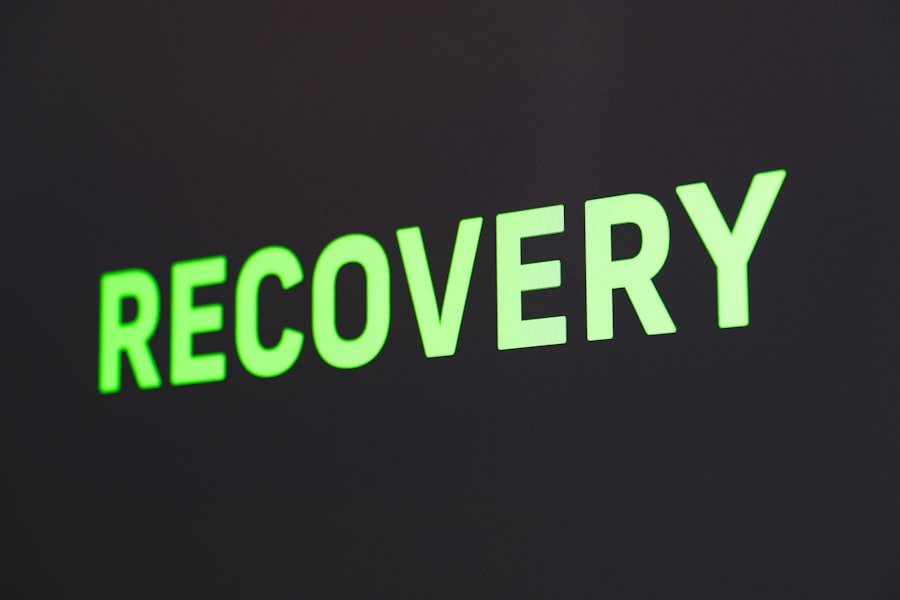When faced with a malfunctioning iPhone, the first step is to assess the extent of the damage. This involves a thorough examination of both the physical and software aspects of the device. Begin by inspecting the exterior for any visible signs of damage, such as cracks in the screen, dents on the body, or water exposure indicators.
If the device has been dropped or exposed to moisture, these factors can significantly impact its functionality. A careful visual inspection can provide clues about whether the issue is superficial or indicative of deeper problems. Once the physical condition has been evaluated, it is essential to turn on the device, if possible, to gauge its operational status.
Pay attention to any unusual behavior, such as unresponsive touch screens, erratic app behavior, or failure to boot up. If the iPhone powers on but exhibits software issues, it may be a sign of corrupted files or a malfunctioning operating system. In contrast, if the device does not turn on at all, it could indicate a more severe hardware failure.
Documenting these observations will be crucial for subsequent steps in the recovery process.
Key Takeaways
- Assess the damage to your iPhone to understand the extent of the data loss
- Backup your iPhone regularly to prevent permanent data loss in case of damage or malfunction
- Use a data recovery tool to attempt to retrieve lost data from your iPhone
- Seek professional help from a certified technician if you are unable to recover the data on your own
- Extract photos from iCloud as a last resort if other methods fail to retrieve the lost data
Backup Your iPhone
Before attempting any recovery methods, it is vital to back up your iPhone to prevent further data loss. This step is particularly important if the device is still operational, as it allows you to secure your data before attempting repairs or recovery efforts. There are two primary methods for backing up an iPhone: using iCloud and iTunes (or Finder on macOS Catalina and later).
To back up via iCloud, ensure that your device is connected to Wi-Fi and navigate to Settings > [Your Name] > iCloud > iCloud Backup. From there, you can initiate a backup by tapping “Back Up Now.” This process will save your photos, app data, settings, and more to Apple’s cloud service. Alternatively, if you prefer a local backup, connect your iPhone to a computer and open iTunes or Finder.
Select your device when it appears in the application and choose “Back Up Now.” This method creates a complete backup on your computer, which can be invaluable if you need to restore your device later. Backing up your data not only safeguards against potential loss during recovery attempts but also provides peace of mind. In cases where the device is unresponsive or severely damaged, having a recent backup ensures that your important files and memories are not permanently lost.
Regular backups should be part of your routine smartphone maintenance to mitigate risks associated with unexpected failures.
Use a Data Recovery Tool

If your iPhone is not functioning correctly and you have not been able to back it up, utilizing a data recovery tool may be your next best option. Numerous software solutions are available that specialize in recovering lost or inaccessible data from iPhones. These tools can often retrieve photos, messages, contacts, and other critical information even from devices that are not fully operational.
One popular option is Dr.Fone by Wondershare, which offers a user-friendly interface and supports various data recovery scenarios. After downloading and installing the software on your computer, connect your iPhone via USB and follow the prompts to initiate a scan for recoverable data. The software will analyze your device and present a list of files that can be restored.
Another notable tool is EaseUS MobiSaver, which similarly allows users to recover lost data from both iOS devices and iTunes backups. While these tools can be effective, their success rates may vary depending on the severity of the damage and how long ago the data was lost. It is essential to choose a reputable tool and follow the instructions carefully to maximize your chances of recovery.
Additionally, some tools offer free trials that allow you to preview recoverable files before committing to a purchase.
Seek Professional Help
| Metrics | Data |
|---|---|
| Number of people seeking professional help | 500,000 |
| Types of professionals sought | Psychologists, Psychiatrists, Counselors |
| Reasons for seeking help | Anxiety, Depression, Relationship issues |
| Success rate of professional help | 70% |
If DIY methods fail or if you are uncomfortable attempting repairs on your own, seeking professional help may be necessary. Authorized service providers or certified technicians possess the expertise and tools required to diagnose and repair complex issues with iPhones. They can perform detailed assessments that go beyond basic troubleshooting, identifying hardware failures or intricate software problems that may not be apparent to the average user.
When choosing a professional service, consider visiting an Apple Store or an authorized service provider for assistance. These locations have access to genuine Apple parts and trained technicians who can ensure that repairs are performed according to Apple’s standards. Additionally, they can provide insights into warranty coverage or potential costs associated with repairs.
If your device is out of warranty, inquire about repair options and pricing upfront to avoid unexpected expenses. In some cases, third-party repair shops may offer competitive pricing and quicker turnaround times than official service centers. However, it is crucial to research these establishments thoroughly before entrusting them with your device.
Look for reviews and testimonials from previous customers to gauge their reliability and quality of service. Ultimately, professional help can save you time and frustration while increasing the likelihood of successful data recovery.
Extract Photos from iCloud
If you have previously enabled iCloud Photo Library on your iPhone, extracting photos from iCloud can be an effective way to recover lost images without needing physical access to the device itself. This feature automatically uploads your photos and videos to Apple’s cloud storage, allowing you to access them from any device signed in with your Apple ID. To retrieve photos from iCloud, start by visiting the iCloud website (www.icloud.com) on a computer or another device.
Log in using your Apple ID credentials and navigate to the Photos app within iCloud. Here, you will find all images stored in your library organized by date and album. You can select individual photos or entire albums for download directly to your computer.
If you have not enabled iCloud Photo Library but have been using iCloud backups regularly, you may still be able to recover photos through an iCloud backup restore process. This involves erasing your current device and restoring it from an earlier backup that contains your desired photos. Keep in mind that this method will replace all current data on your device with what was present in the backup at that time.
Try to Repair the iPhone

Identifying Repairable Issues
If assessing the damage reveals that the issue may be repairable without professional assistance, attempting some basic repairs could be worthwhile. Common problems such as a cracked screen or battery issues can often be resolved with DIY methods if you have the right tools and knowledge. For instance, replacing a cracked screen typically involves purchasing a replacement part online and following detailed guides available on platforms like YouTube or repair websites.
Precautions Before Repairing
Before proceeding with any repairs, ensure that you have backed up your data if possible. This precaution protects against accidental data loss during the repair process. Additionally, familiarize yourself with the specific model of your iPhone as repair procedures can vary significantly between models.
Knowing Your Limits
Websites like iFixit provide comprehensive guides that outline step-by-step instructions for various repairs along with lists of necessary tools. However, it is essential to recognize when a problem exceeds your skill level or requires specialized equipment. For example, issues related to internal components such as logic boards or water damage may necessitate professional intervention due to their complexity. Attempting repairs beyond your expertise could lead to further damage or void any existing warranties.
Use a Third-Party Service
In situations where professional help is needed but an authorized service center is not an option, third-party repair services can provide an alternative solution for recovering data or repairing an iPhone. These services often specialize in various types of repairs and data recovery techniques that may not be available through official channels. When selecting a third-party service provider, it is crucial to conduct thorough research to ensure reliability and quality of service.
Look for companies with positive customer reviews and testimonials that highlight their success rates in recovering data from damaged devices. Some well-known third-party services include uBreakiFix and CPR Cell Phone Repair, which have multiple locations across many regions. While third-party services can often offer competitive pricing compared to authorized repair centers, it is essential to weigh the risks involved.
Using non-genuine parts may affect future warranty claims or lead to further complications down the line. Always inquire about warranties on repairs performed by third-party services and ensure they provide clear terms regarding their policies on data recovery.
Prevent Future Data Loss
Once you have navigated through the challenges of recovering data from a damaged iPhone, it is crucial to implement strategies that minimize the risk of future data loss. One of the most effective preventive measures is establishing a regular backup routine for your device. Utilizing both iCloud and local backups through iTunes or Finder ensures that you have multiple copies of your important data stored securely.
In addition to regular backups, consider enabling features such as Find My iPhone, which can help locate your device if it becomes lost or stolen. This feature also allows you to remotely erase your data if necessary, protecting sensitive information from falling into the wrong hands. Furthermore, investing in protective accessories like screen protectors and durable cases can significantly reduce the likelihood of physical damage from drops or impacts.
Educating yourself about safe usage practices can also play a vital role in preventing future issues. Avoid exposing your device to extreme temperatures or moisture, as these conditions can lead to hardware failures over time. Additionally, being cautious about downloading apps from untrusted sources can help protect against malware or software corruption that could compromise your device’s functionality.
By taking proactive steps toward data protection and device maintenance, you can significantly reduce the chances of encountering similar problems in the future while ensuring that your valuable information remains secure.
If you are looking to retrieve photos from a broken iPhone, you may find this article on how to clean your dishwasher helpful. Just like fixing a broken iPhone, maintaining your dishwasher requires some technical know-how. By following the steps outlined in the article, you can ensure that your dishwasher functions properly and efficiently.
FAQs
What are the common reasons for a broken iPhone?
Common reasons for a broken iPhone include dropping the device, water damage, hardware malfunctions, and software issues.
Can I retrieve photos from a broken iPhone?
Yes, it is possible to retrieve photos from a broken iPhone using various methods such as using iTunes or iCloud backup, third-party software, or seeking professional help from a phone repair service.
How can I retrieve photos from a broken iPhone using iTunes or iCloud backup?
You can retrieve photos from a broken iPhone using iTunes by connecting the device to a computer and restoring from a backup. With iCloud, you can access your photos by logging into your iCloud account on a different device.
What third-party software can I use to retrieve photos from a broken iPhone?
There are various third-party software options available such as Dr.Fone, iMyFone D-Back, and PhoneRescue that can help retrieve photos from a broken iPhone by scanning the device and recovering the data.
Should I seek professional help to retrieve photos from a broken iPhone?
If you are unable to retrieve photos from a broken iPhone using DIY methods, it is advisable to seek professional help from a phone repair service or data recovery specialist who can assist in retrieving the photos.

